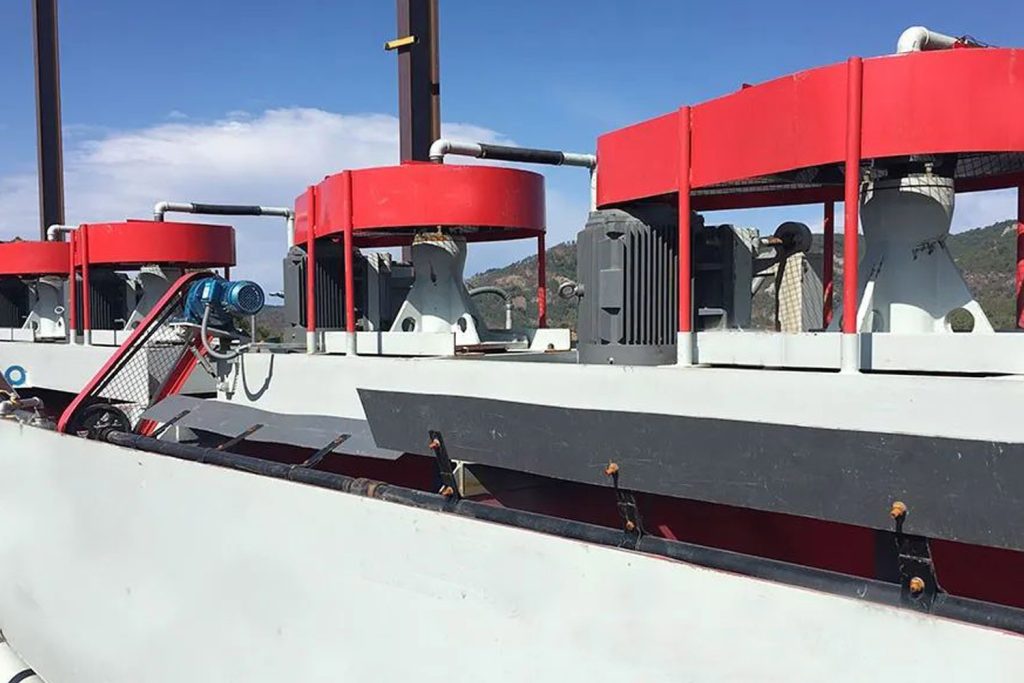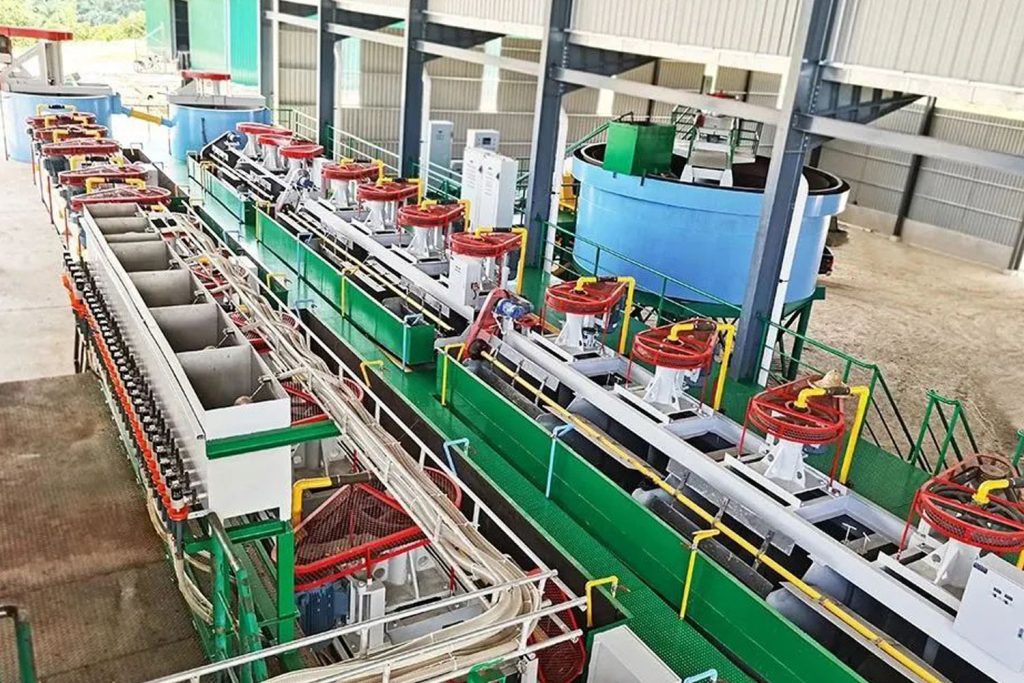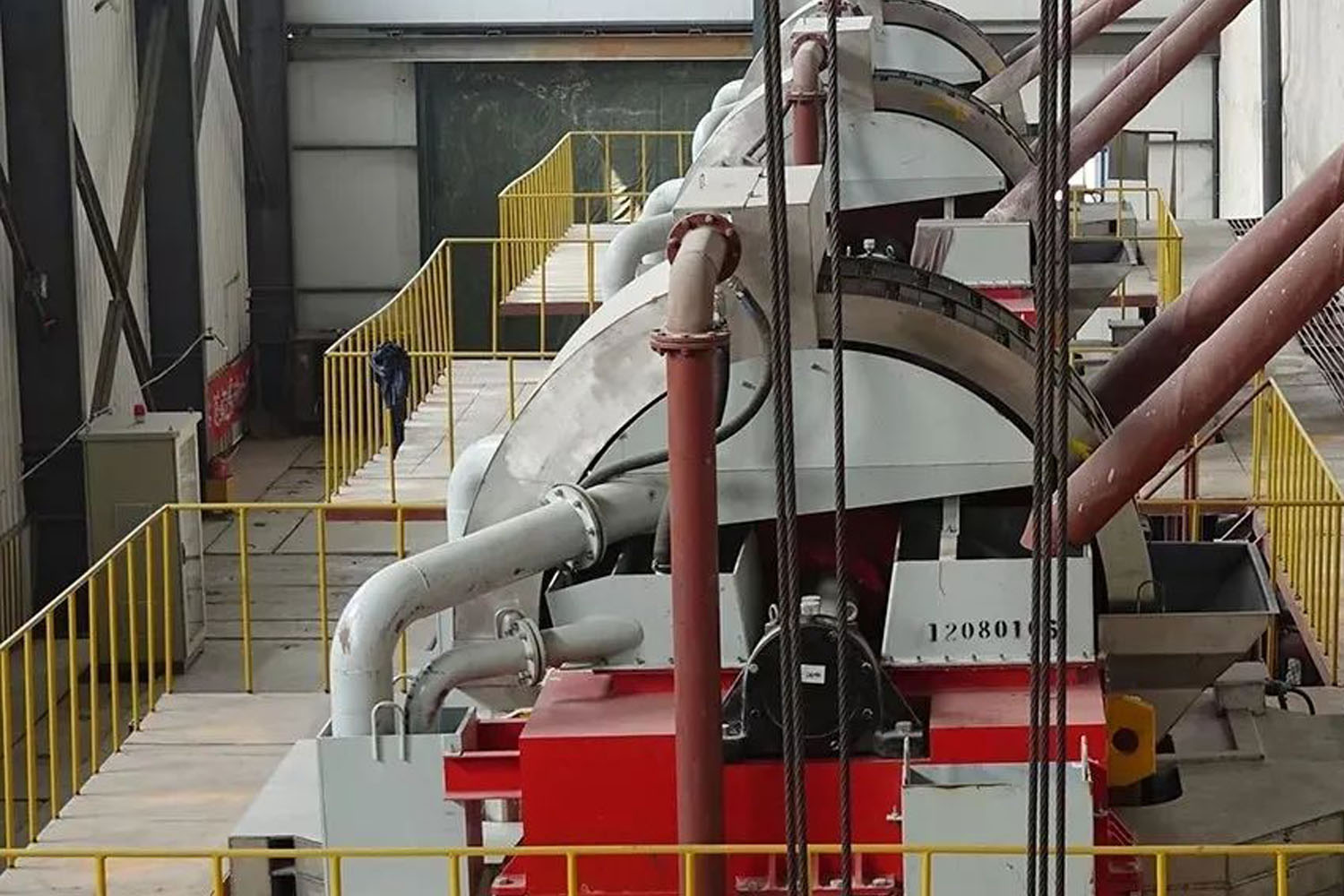Altered rock-type gold-bearing deposits are composed of several altered bodies and micro-altered minerals, among which chlorite, dolomite, quartz and other altered bodies and sulfide minerals are the main minerals. The gold ores of altered rock type gold-bearing deposits are usually fine-grained and rich in precious metals such as gold, silver, and copper.
As a type of gold-bearing deposit, altered rock-type gold ore has a high gold content, but the main precious metals and impurity minerals contain relatively complex components, which require high mineral processing technology.
In addition, the occurrence of altered rock-type gold-bearing deposits is relatively complex, and the ore properties are affected by factors such as bedrock type, vein type, metamorphism, and altered minerals, so it is more difficult to beneficiate.
Three chemical beneficiation methods for gold-bearing deposits
The mineral processing of altered rock type gold ore involves many aspects of processing. Generally speaking, the mineral processing of altered rock type gold-bearing deposits can adopt cyanidation metallurgy, gravity flotation, magnetic separation, chemical mineral processing and other methods. Among them, the chemical mineral processing method is a more important part.
Chemical mineral processing is a method of separating gold from ore through chemical reactions. Common chemical mineral processing methods in altered rock type gold deposits include leaching, percolation, and leaching-electrolysis.
The following is a detailed description of the common chemical mineral processing methods in the mineral processing of altered rock type gold ore.
Leaching method
Leaching is a chemical mineral processing method commonly used in the treatment of altered rock type gold ore, which achieves the separation of gold through extensive contact time and material transport. In the leaching process, it is necessary to transfer gold ore to gold ions in dissolved oxygen particles or ion state through electron transfer.
The process of leaching method :
- Ore crushing: crush the ore to a suitable particle size for better leaching.
- Leaching: use solvent or oxidant to leach gold-bearing ore. The leaching agent can be cyanide, sulfate, ammonia, nitric acid, etc. In the leaching process, factors such as the type and concentration of the leaching agent, leaching time, and decomposition reaction rate need to be controlled to achieve the best effect.
- Precipitation: After leaching, the gold in the precipitation is precipitated for subsequent steps to extract gold.
- Electrodeposition: Electrodeposition of gold in the leaching precipitation is performed using the electrowinning method. During electrowinning, an electric current is used to move gold ions so that they form solid metal on the electrode surface.
- Dissolving sediments: After electrowinning, the sediments need to be dissolved to obtain a pure gold solution.
Leaching method is a relatively common chemical mineral processing method, which can improve the recovery rate of gold and other precious metals by extracting the gold content in the ore.

percolation
Percolation is usually used to treat gold-bearing mixtures, and it is a chemical mineral processing method based on the principle of separation. In diafiltration, a filter or membrane is used to separate the gold particles and other impurities from the slurry.
The specific process of percolation method:
- Filtration: Filter the drainage to achieve better separation effect. In the filtration process, filter layers, filter membranes and other additional substances are required to achieve the best results.
- Recycling: Through the process of filtration, gold particles can be concentrated in the filter layer. Next, the particles are collected and subjected to subsequent processing, such as leaching, electrowinning, and other methods.
In the diafiltration method, it is necessary to select the appropriate filtration technology, such as pressure filtration, vacuum filtration, etc., according to the characteristics of the liquid and particulate matter, in order to achieve higher efficiency and higher separation.
Leaching-Electrolysis
The leaching-electrolysis method can be regarded as the combination of leaching method and electrowinning method, and is a chemical mineral processing method for the treatment of altered rock type gold ore. After the leaching process, the resulting gold deposits are accumulated with an electric current, causing them to form solid metal on the electrodes.

Leaching-electrolysis process
- Leaching: Use cyanide or other appropriate leaching agents to dissolve gold-containing ores to obtain gold ions.
- Precipitation: After leaching, the gold in the ore is precipitated by chemical reaction.
- Electrowinning: Place the precipitated gold ions in an electrolytic cell and use an electric current to convert them into solid, high-purity metals.
- Dissolving electrodeposition: After electrowinning, the deposit needs to be dissolved to obtain a pure gold solution.
The leaching-electrolysis method is a challenging chemical mineral processing method, which requires careful adjustment of parameters such as leaching agent and reaction kinetics to achieve a high separation effect. At the same time, it is also necessary to select the appropriate electrolyte and electrolysis conditions to ensure the production of metals with higher purity.
In conclusion
Chemical mineral processing method is a very important part in the mineral processing process of altered rock type gold-bearing deposits. Leaching, percolation, and leaching-electrolysis are three of the common methods, each of which has its own characteristics and limitations.
In practical application, it is necessary to select the appropriate chemical mineral processing method according to different ore characteristics and process requirements, and make careful adjustment and optimization to obtain efficient mineral processing effect and high gold recovery rate.
